Measuring ring size accurately ensures a perfect fit, combining comfort and style. This guide explores methods, tools, and tips to determine your size, ensuring your ring worn with confidence always.
Importance of Accurate Measurement
Accurate ring measurement is crucial for ensuring a comfortable and proper fit. A ring that is too tight may restrict blood flow, while one that is too loose risks slipping off. Correct sizing ensures the ring sits securely, enhancing both comfort and appearance. Additionally, accurate measurement prevents the need for costly resizing or potential damage to the ring. Proper fit also maintains the ring’s structural integrity, especially for delicate designs. Factors like finger swelling throughout the day and temperature changes can affect size, making precise measurement essential. By understanding how to measure correctly, you can avoid common mistakes and enjoy a ring that looks and feels its best. Accurate sizing is the foundation of a perfect fit, ensuring your ring is both functional and stylish for years to come.
Overview of Measurement Methods
Several methods exist to determine ring size, each offering unique convenience and accuracy. The most common techniques include using a professional ring sizer tool, measuring with a string or paper, or comparing to an existing ring that fits well. Additionally, printable ring size charts and digital calculators provide accessible solutions for measuring at home. These methods vary in complexity but share the goal of determining the best fit. Some techniques focus on diameter or circumference measurements, while others rely on direct comparison. Understanding the pros and cons of each method allows individuals to choose the approach that best suits their needs. Whether using traditional tools or modern digital solutions, accurate measurement is achievable with the right approach. This overview provides a foundation for exploring each method in detail, ensuring a perfect fit for any ring.
Benefits of Correct Sizing
Correct ring sizing ensures optimal comfort and functionality, preventing issues like rings slipping off or feeling too tight. A properly fitted ring enhances both appearance and wearability, allowing for natural finger movement. It also avoids potential damage to the ring itself, as ill-fitting jewelry may bend or warp over time. Additionally, accurate sizing minimizes the need for costly resizing processes, which can alter the ring’s original design or structure. Proper fit also accounts for factors like finger swelling due to temperature changes, ensuring the ring remains comfortable in various conditions. Overall, correct sizing is essential for both practicality and aesthetic appeal, making it a crucial step in selecting or designing a ring that meets personal preferences and lifestyle needs.
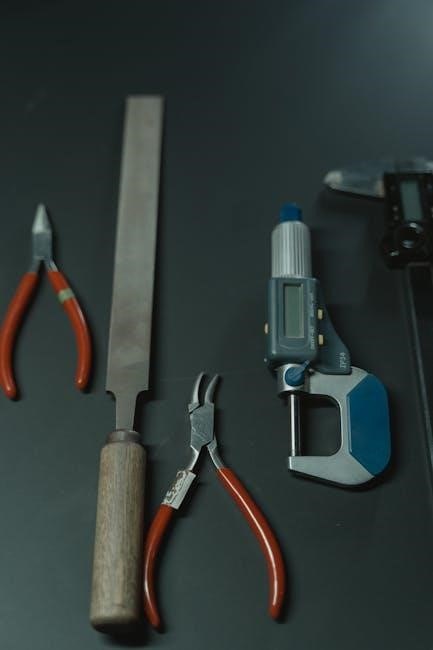
Methods of Measuring Ring Size
Common techniques include using a ring sizer tool, measuring with a string or paper, or comparing to an existing ring that fits well for accurate sizing results.
Using a Ring Sizer Tool
A ring sizer tool is a precise way to determine your size. It typically consists of a set of metal or plastic bands in various sizes. To use it, slide the ring onto your finger, ensuring it fits comfortably over the knuckle. The size indicated on the tool when the ring feels snug but not tight is your correct measurement. This method is highly accurate as it accounts for the shape and size of your finger. Many jewelers provide ring sizer tools, or you can purchase one online. For the best results, measure at room temperature, as fingers can swell slightly during hot weather or shrink in cold conditions. Using a ring sizer tool ensures a perfect fit, making it a recommended method for those unsure of their size.
Measuring with a String or Paper
Measuring your ring size with a string or paper is a simple and effective method. Wrap a string or a strip of paper around the base of your finger, ensuring it is snug but not too tight. Mark the point where the ends meet with a pen. Lay the string or paper flat and measure the length in millimeters using a ruler. Compare this measurement to a ring size chart to determine your size. For accuracy, measure at the end of the day when fingers are at their largest. If your measurement falls between sizes, consider rounding up for comfort. This method is especially useful when a ring sizer tool is unavailable. Always ensure the string or paper is not twisted and lies flat for an accurate reading. This technique provides a reliable way to find your ring size without specialized tools.
Using an Existing Ring
If you already own a ring that fits comfortably, it can serve as an excellent reference for determining your size. Start by selecting a ring that fits the finger you intend to wear the new ring on. Measure the interior diameter of the ring using a ruler or calipers, ensuring accuracy. Compare this measurement to a ring size chart to find the corresponding size. For the best results, choose a ring with a similar width to the one you intend to purchase, as thicker rings may require a slightly larger size. This method is quick and convenient, especially if you have a ring that fits perfectly. Always double-check the measurement to avoid sizing errors. Using an existing ring is a practical way to ensure your new ring will fit comfortably and securely.
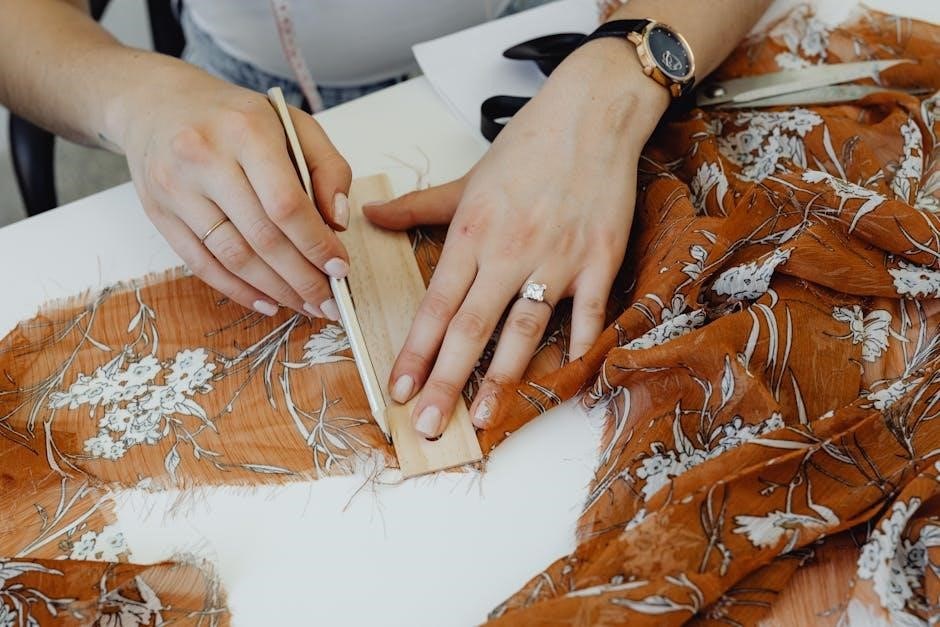
Factors Affecting Ring Size
Natural fluctuations in finger size occur due to temperature, time of day, and hand dominance, impacting the perfect fit. Measure carefully to account for these variables.
How Finger Size Changes Throughout the Day
Finger size naturally fluctuates due to various factors, including temperature, activity level, and time of day. Fingers tend to swell slightly in warmer environments or during physical activity, while they may shrink in colder conditions. This variation can affect how a ring fits, making it tighter or looser depending on the time of day. For instance, fingers are typically largest in the evening and smallest in the morning. Understanding these changes is crucial for accurate ring measurement, as sizing done at the wrong time might lead to discomfort or improper fit. To ensure the best results, measure your finger when it is at its average size, ideally at room temperature and midday. This approach helps in selecting a ring that remains comfortable throughout the day, regardless of minor size fluctuations.
Impact of Temperature on Finger Size
Temperature significantly influences finger size, affecting ring fit. In warmer conditions, fingers tend to swell due to increased blood flow, making rings feel tighter. Conversely, in colder environments, fingers shrink slightly, causing rings to feel looser. This natural fluctuation can impact the accuracy of ring measurements. For instance, measuring in hot weather may result in a tighter fit than desired, while measuring in cold conditions might lead to a looser fit. To ensure accurate sizing, it’s best to measure at room temperature when fingers are at their average size. Avoid measuring immediately after intense activity or exposure to extreme temperatures, as this can cause temporary swelling or shrinkage. By considering temperature’s role, you can select a ring size that remains comfortable regardless of environmental changes.
Difference Between Dominant and Non-Dominant Hand
Finger size can vary slightly between the dominant and non-dominant hand due to differences in muscle development and usage. Typically, the dominant hand may have slightly larger fingers because of increased activity and strength. This variation can impact ring sizing, as a ring that fits the non-dominant hand may feel tighter on the dominant hand, and vice versa. To ensure accuracy, it’s recommended to measure the specific finger on which the ring will be worn. If the ring is intended for the dominant hand, consider potential swelling or tightness caused by daily activities. Conversely, for the non-dominant hand, a slightly looser fit might be more comfortable. Always measure the desired finger and consider the hand’s role in determining the perfect ring size for optimal comfort and fit.
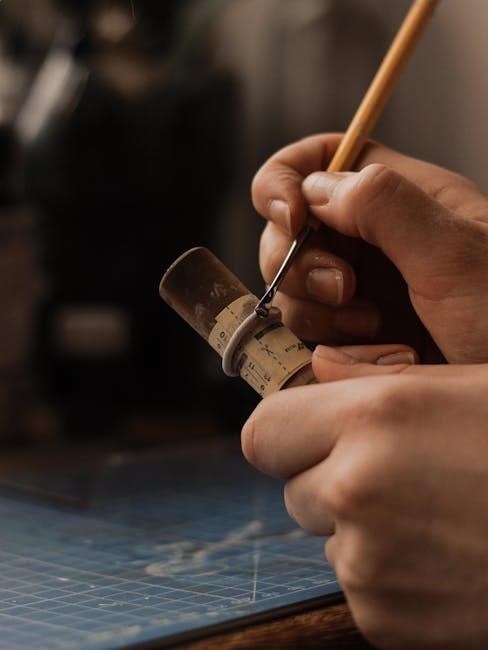
How to Use a Ring Size Chart
Measure your finger’s circumference or an existing ring’s diameter, then match the measurement to the chart. Ensure accuracy by considering factors like temperature and finger size fluctuations throughout the day.
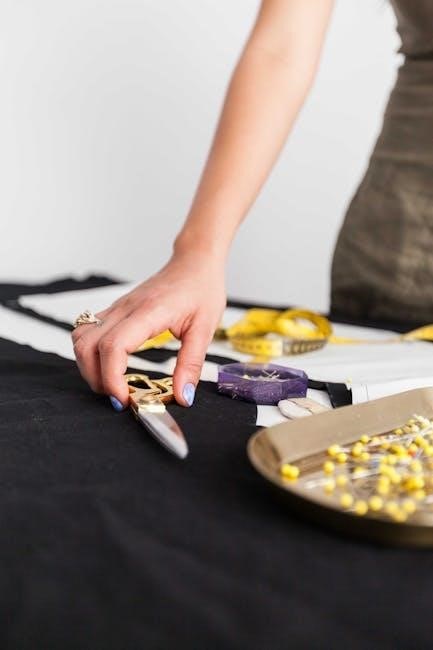
Understanding Diameter and Circumference Measurements
Measuring a ring’s diameter involves determining the distance across the ring’s inner circle. Circumference measures the ring’s inner perimeter. Both are crucial for accurate sizing. Use a ruler or caliper to measure diameter in millimeters, ensuring precision. For circumference, wrap a string around the finger, mark the overlap, and measure the length. These measurements correspond to standard ring sizes on charts. Accurate measurements ensure a comfortable fit, preventing the ring from being too tight or too loose. Proper sizing also considers factors like finger swelling during the day and temperature changes, which can affect fit. Using these measurements with a ring size chart helps determine the correct size effectively. Always verify measurements for accuracy to ensure the perfect fit for your ring.

Converting Measurements to Ring Sizes
Once you have your diameter or circumference measurement, use a ring size chart to find the corresponding size. Diameter measurements are converted directly, while circumference is matched to the nearest standard size. For example, a 62mm circumference typically corresponds to a size 9.5 in US sizing. Ensure accuracy by cross-referencing both diameter and circumference. If measurements fall between sizes, consider the ring’s width, as thicker rings may require a larger size. Always double-check your measurements to avoid errors. Proper conversion ensures the ring fits comfortably, neither too tight nor too loose. This step is crucial for purchasing or designing a ring, as incorrect sizing can lead to discomfort or the need for resizing. Use online tools or printable charts to simplify the conversion process and achieve the perfect fit.
Using a Printable Ring Size Chart
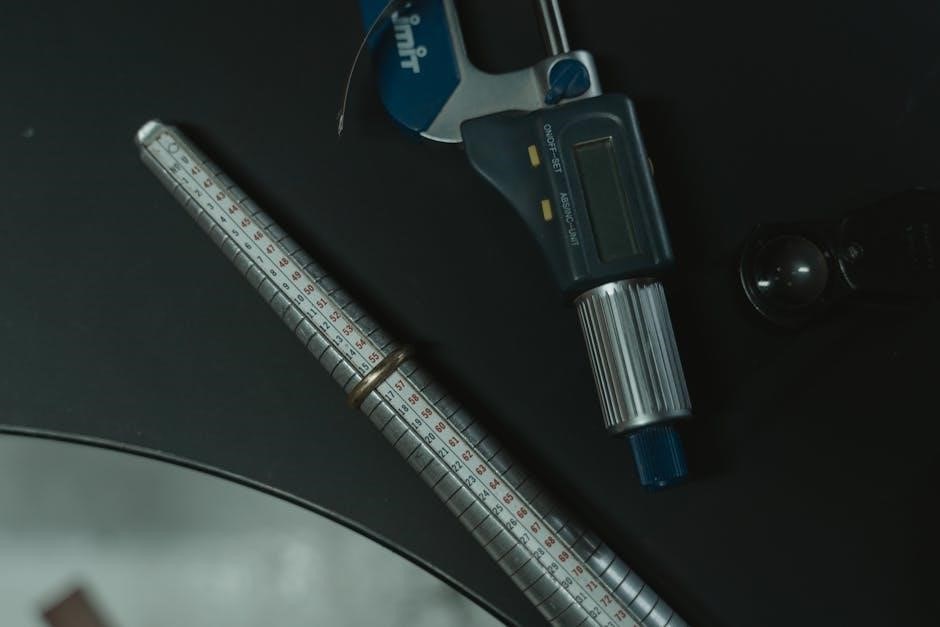
A printable ring size chart is a convenient tool for accurate measurement at home. First, download and print the chart, ensuring it is scaled to 100% to maintain accuracy. Use a ruler to verify the printed scale, as most charts include a reference line (e.g., 5 cm) to confirm proper sizing. Wrap a string or paper around your finger, mark the overlap, and measure the length to determine your circumference. Compare this measurement to the chart, aligning it with the corresponding size; For the best fit, measure at the end of the day when fingers are at their largest. If the measurement falls between sizes, opt for the next larger size. Printable charts often include both diameter and circumference measurements, making it easy to find your perfect fit. This method is ideal for those without a ring sizer tool, providing reliable results for ordering or designing a ring. Always double-check your measurements for accuracy.
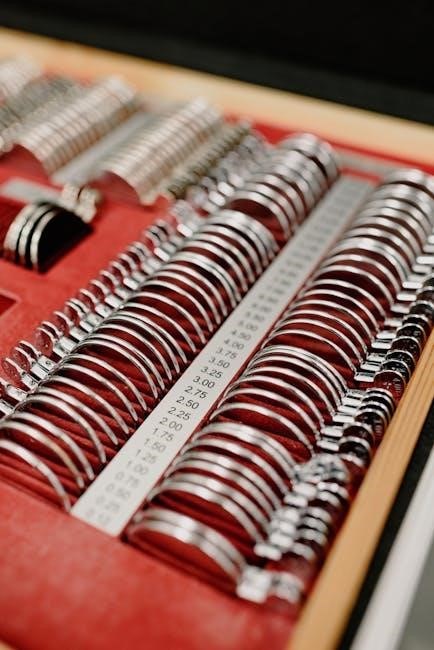
Ensuring Accuracy in Measurement
Measure your finger at the end of the day for the most accurate fit. Avoid measuring when hands are cold or hot, as this can alter size. Ensure the ring sits snugly but can slide over the knuckle easily for comfort and security.
Measuring at the Right Time
Timing is crucial for accurate ring measurement. The best time to measure is at the end of the day when your fingers are at their largest due to natural swelling. Avoid measuring when your hands are cold, as this can result in a smaller size. Similarly, hot temperatures may cause fingers to swell, leading to a larger measurement. For consistency, measure when your hands are at a comfortable room temperature. This ensures the ring will fit well throughout the day. By measuring at the right time, you can achieve a balance between comfort and security, ensuring the ring sits snugly without being too tight or too loose.
Avoiding Common Mistakes
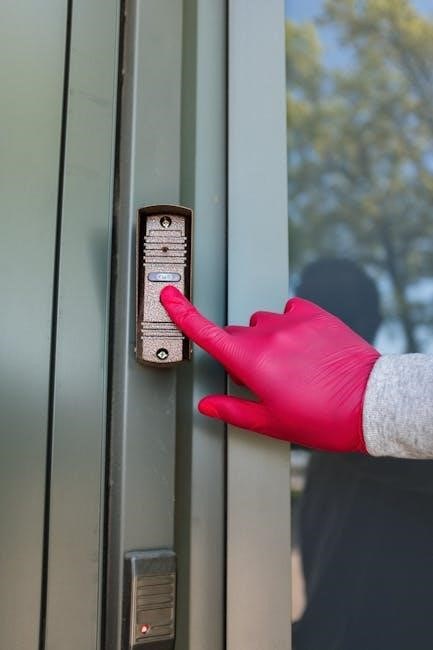
When measuring your ring size, several common mistakes can lead to an incorrect fit. One of the most frequent errors is measuring too tightly or too loosely. The ring should slide over the knuckle with ease but feel snug on the base of the finger. Another mistake is not considering the thickness of the ring band; thicker bands may require a larger size for comfort. Additionally, using a ring from a different finger or hand can lead to inaccuracies, as finger sizes vary. Lastly, not accounting for natural fluctuations in finger size throughout the day can result in a poor fit. By being mindful of these potential pitfalls, you can ensure an accurate and comfortable measurement, leading to a ring that fits perfectly.
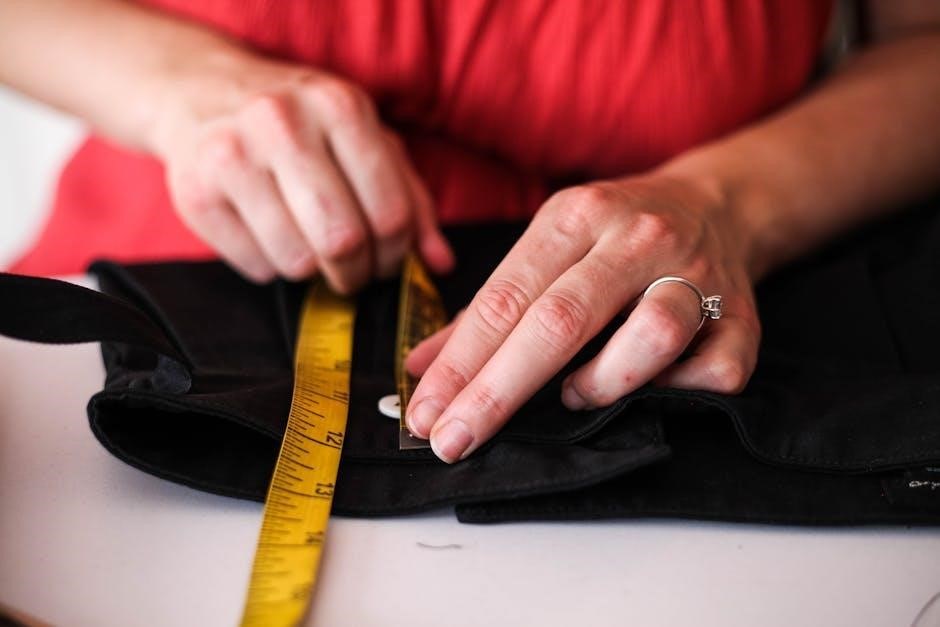
Additional Resources and Tools
Utilize printable ring size charts, online calculators, and DIY kits for accurate measurements. These tools provide step-by-step guides and conversions, ensuring you find your perfect fit effortlessly from home.
Printable Ring Sizer Tools
A printable ring sizer tool is a convenient and accurate way to measure your ring size at home. These tools, often provided by jewelers, are designed to be downloaded and printed, ensuring precision. To use one, simply print the guide according to the instructions, ensuring the scale is accurate using a ruler. Wrap the tool around your finger or measure an existing ring to find your size. Many printable tools include both diameter and circumference measurements, making it easy to convert to standard ring sizes. They are especially useful for those who prefer a DIY approach or want to surprise someone with a custom fit. Always measure at the end of the day for the most accurate results, as finger size can vary throughout the day. Printable tools are a reliable and cost-effective solution for determining your perfect ring size.
Online Ring Size Calculators
Online ring size calculators offer a quick and convenient way to determine your ring size from the comfort of your home. These tools typically require you to input your finger’s circumference or diameter measurements, which can be obtained using a string, ruler, or existing ring. Many calculators also provide conversion options between different sizing systems, such as US, UK, and EU standards. Some calculators are more advanced, allowing you to select specific jewelers or brands to ensure accuracy. They are especially useful for those who prefer a digital approach or need assistance converting measurements. Online ring size calculators are accessible 24/7, making them a popular choice for individuals seeking a precise and hassle-free sizing experience. Always double-check your measurements for the most accurate results.

